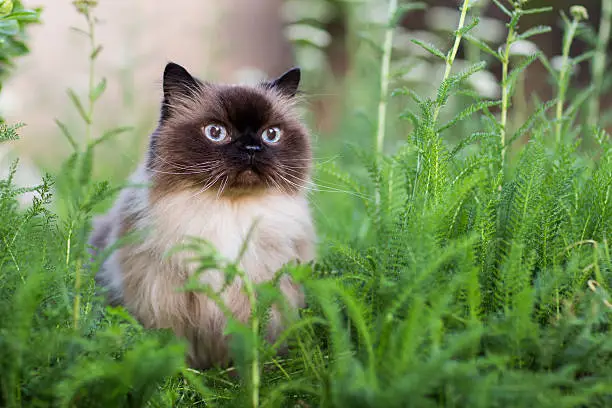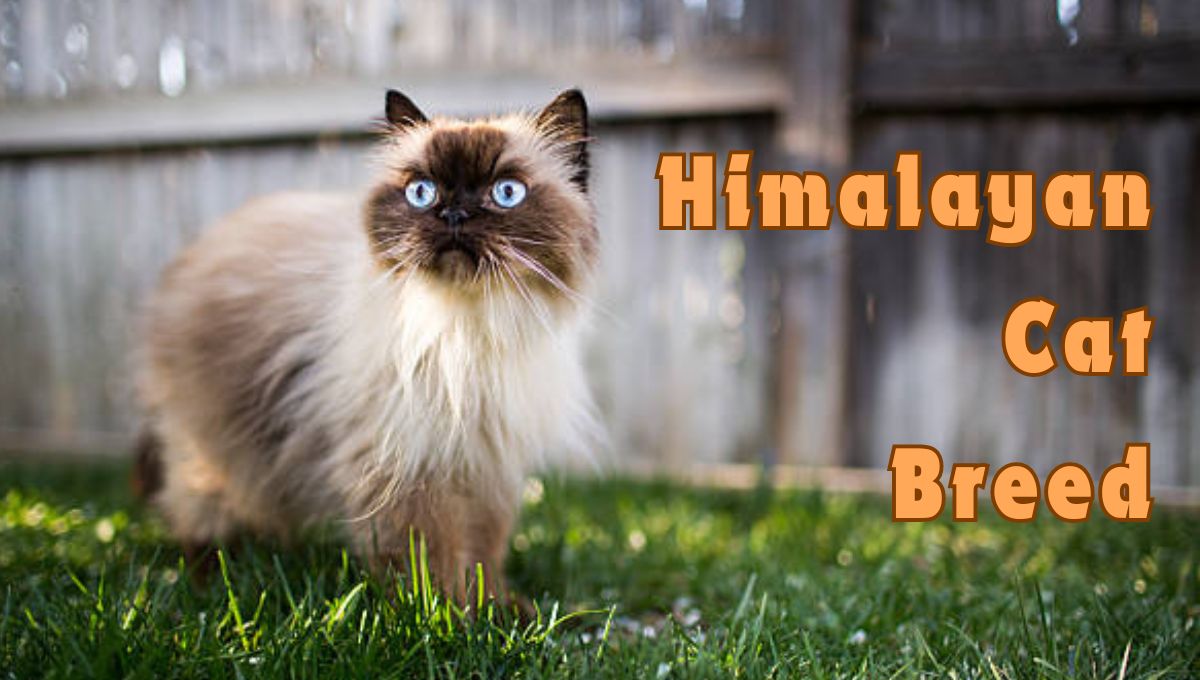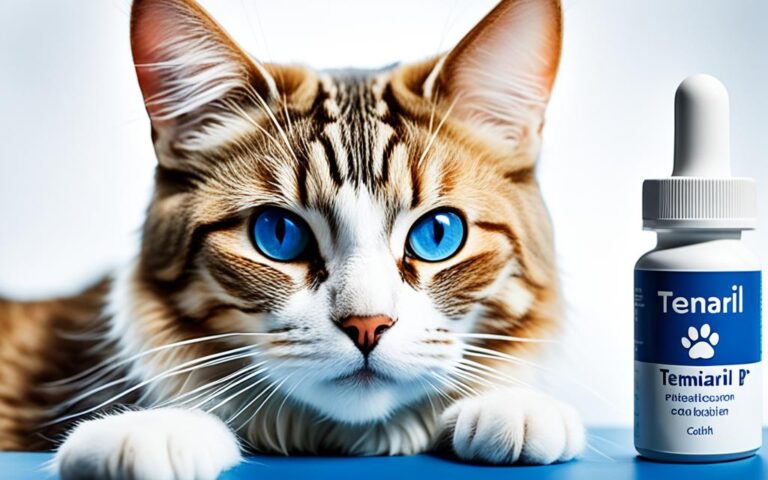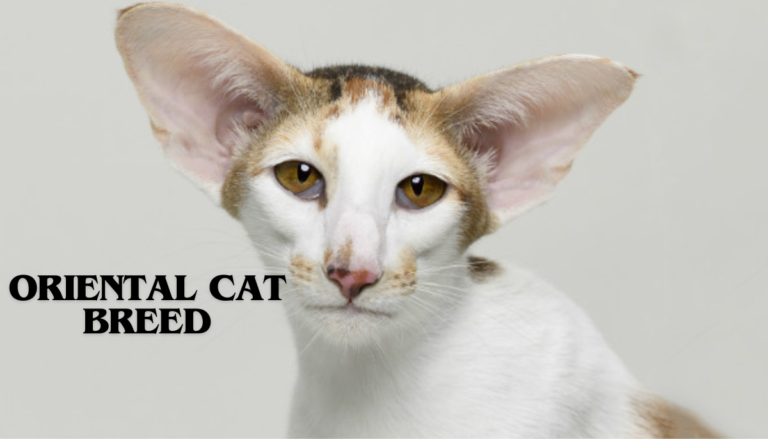Himalayan Cat Breed
The Himalayan cat breed, often simply called the Himalayan, is a charming and elegant cat that combines the best traits of its Persian and Siamese ancestors. Known for its striking appearance, the Himalayan has a luxurious, long coat similar to the Persian, coupled with the distinctive color points of the Siamese. These color points include shades of chocolate, lilac, blue, and seal, appearing on the ears, face, paws, and tail, providing a beautiful contrast to their creamy white bodies. Himalayan cats are also recognized for their captivating blue eyes, which add to their overall allure.

In addition to their stunning looks, Himalayans are renowned for their gentle and affectionate personalities. They tend to be calm and loving, making them excellent companions for families and individuals alike. Unlike some other breeds, Himalayans are not overly active but enjoy interactive play sessions and gentle affection. They thrive in indoor environments where they can be pampered and kept clean, as their long fur requires regular grooming to maintain its beauty and prevent matting.
Himalayan cats are unique due to their combination of Persian luxury and Siamese elegance, both in terms of appearance and temperament. Their serene and sweet nature, along with their distinctive looks, makes them a beloved choice for cat enthusiasts seeking a beautiful and gentle feline friend.
Table of Contents
I. Origin and History of Himalayan Cat Breed :
- Breeds that Played a Role in Its Formation: The Himalayan cat breed is a hybrid developed through the crossbreeding of Persians and Siamese cats. This combination aimed to merge the luxurious, long-haired coat of the Persian with the color points and striking blue eyes of the Siamese.
- Geographical Region of Origin: The creation of the Himalayan cat breed began in the United States and the United Kingdom during the early to mid-20th century. The breeding programs aimed to develop a cat with the desired traits from both the Persian and Siamese breeds.
- Influence on Characteristics Today: The crossbreeding efforts have resulted in a cat that possesses the best of both worlds. From the Persian, Himalayans inherit their long, dense, and plush coat, along with their calm and affectionate demeanor. From the Siamese, they acquire the striking color points on their ears, face, paws, and tail, and their brilliant blue eyes. This blend has produced a cat that is both beautiful and gentle, with a serene personality and striking appearance.
- Folklore and Legends: While there are no specific folklore or legends surrounding the Himalayan breed’s development, their unique combination of traits from the Persian and Siamese has often led to them being regarded as a royal and luxurious breed. Their name, “Himalayan,” suggests an exotic and majestic origin, although the breed itself does not originate from the Himalayan region.
The creation and development of the Himalayan cat breed highlight the desire to combine specific desirable traits from two well-loved breeds, resulting in a unique and cherished feline that is appreciated for its beauty, gentle nature, and distinctive appearance.
II. Physical Characteristic of Himalayan Cats :
| Height | Himalayans typically stand about 10 to 12 inches tall at the shoulder. |
| Weight | Adult males usually weigh between 9 to 14 pounds, while females typically weigh between 7 to 11 pounds. |
| Life Span | Himalayan cats generally have a lifespan of 9 to 15 years, though some can live longer with proper care. |
| Good With | They are well-suited for families, singles, and seniors. Himalayans get along well with children and other pets, especially if they are introduced at a young age. |
| Temperament | Known for their calm and gentle nature, Himalayans are affectionate and enjoy spending time with their owners. They are generally quiet and serene, preferring a tranquil environment. |
| Intelligence | Himalayans are moderately intelligent. They can be trained to follow basic commands and enjoy interactive toys that stimulate their mind. |
| Shedding Amount | They are heavy shedders, requiring regular grooming to manage their long fur and reduce shedding. |
| Grooming | Due to their long, dense coat, Himalayans require daily grooming to prevent matting and tangles. Regular brushing helps maintain their coat’s health and appearance. |
| Exercise Needs | Himalayans have moderate exercise needs. They enjoy playful activities but are not overly energetic. Providing them with toys and occasional playtime is usually sufficient. |
| Energy Level | They have a low to moderate energy level, preferring to lounge and relax rather than engage in vigorous activity. |
| Meowing Level | Himalayans are generally quiet cats. They communicate softly and are not known for being overly vocal. |
| Drool amount | They are not prone to drooling. |
| Coat Length/Texture | Himalayans have a long, thick, and plush coat with a fine texture. Their fur is dense and requires regular maintenance. |
| Colors | The breed showcases a variety of color points, including seal, blue, chocolate, lilac, red, and cream. These color points appear on their ears, face, paws, and tail, while the rest of the body is typically a lighter shade. |
| Patterns | The primary pattern seen in Himalayans is the color point pattern, inherited from their Siamese ancestry. This pattern features darker coloration on the extremities compared to the rest of the body. |

Himalayan Cat Breed Details
Size :
- Measurements: Himalayan cats typically stand about 10 to 12 inches tall at the shoulder.
- Weight Ranges: Adult males usually weigh between 9 to 14 pounds, while females typically weigh between 7 to 11 pounds.
Coat type :
- Texture: The coat is long, thick, and plush with a fine texture. It is dense and requires regular grooming.
- Length: The fur is long and luxurious, covering the entire body and giving the cat a fluffy appearance.
Colour Variation :
Common Colors:
- Seal Point
- Blue Point
- Chocolate Point
- Lilac Point
- Red Point
- Cream Point
- Tortie Point
- Blue-Cream Point
Color Patterns :
The primary pattern seen in Himalayans is the color point pattern, which is characterized by darker coloration on the ears, face, paws, and tail, while the rest of the body is typically a lighter shade. This pattern is inherited from their Siamese ancestry.
Distinctive Features :
- Ear Shape: Himalayans have small to medium-sized ears that are rounded at the tips and set far apart on the head.
- Tail Characteristics: The tail is of medium length, proportionate to the body, and is bushy with long fur.
- Facial Structure: Himalayans have a distinct, flat face with a short nose, similar to their Persian relatives. This gives them a characteristic “doll-face” appearance.
- Eye Color: They have striking blue eyes that are round and large, contributing to their sweet and expressive facial expression.
- Body Structure: They possess a cobby body type, meaning they are sturdy and well-muscled with a broad chest and short legs, giving them a compact and powerful build.
These distinctive traits, along with their gentle temperament and striking appearance, make the Himalayan breed unique and highly sought after among cat enthusiasts.
III. Temperament and Personality of Himalayan Cats :
Typical Temperament and Personality Traits :
- Himalayans are known for their calm and gentle demeanor. They are affectionate cats that enjoy being close to their owners, often following them around the house and seeking attention.
- They tend to be more laid-back compared to other breeds, enjoying a quiet and peaceful environment.
- Himalayans are generally sociable and get along well with both humans and other pets, making them a great addition to families and households with multiple animals.
General Demeanor :
- Friendliness: These cats are very friendly and bond closely with their families. They thrive on human companionship and often form strong attachments to their owners.
- Sociability: Himalayans are sociable and enjoy spending time with their human companions. They are typically good with children and can adapt well to living with other pets.
- Affectionate Nature: They are known for their loving nature and will often seek out laps to sit on or cuddle up next to their favorite people.
Common Behavioral Traits :
- Positive Traits: Himalayans are typically well-behaved, with a sweet and docile personality. They are playful but not overly energetic, making them suitable for indoor living.
- Challenging Traits: Due to their Persian ancestry, Himalayans can sometimes be prone to respiratory issues caused by their flat faces. They may also require frequent grooming to maintain their long, dense coats, which can be time-consuming.
Managing and Addressing Breed-Specific Behavior Issues :
- Grooming: Regular grooming is essential to prevent matting and maintain the health of their coat. Daily brushing is recommended to keep their fur in good condition and reduce shedding.
- Health Monitoring: Owners should be vigilant about respiratory health, ensuring that their cat is not showing signs of breathing difficulties. Regular veterinary check-ups are important to manage and prevent potential health issues.
- Enrichment: Providing a variety of toys and activities can help keep Himalayans mentally stimulated and prevent boredom. Interactive play sessions are beneficial for their overall well-being.
- Calm Environment: Creating a calm and stable environment will help these cats feel secure and happy. Avoiding loud noises and sudden changes can reduce stress for this sensitive breed.
By understanding and addressing these specific needs and behaviors, owners can ensure a happy and healthy life for their Himalayan cats.

IV. Care and Maintenance of Himalayan Cat Breed :
Grooming Needs :
- Daily Brushing: Himalayans have long, dense coats that require daily brushing to prevent matting and tangles. Use a high-quality cat brush to keep their fur in good condition.
- Bathing: Occasional bathing helps to keep their coat clean and reduces the risk of skin infections. Use cat-specific shampoo and ensure thorough drying to avoid skin issues.
- Ear Cleaning: Regularly check and clean their ears to prevent wax buildup and infections. Use a vet-recommended ear cleaner and cotton balls.
- Nail Trimming: Trim their nails every few weeks to prevent overgrowth and discomfort. Regularly inspect their paws for any signs of injury or infection.
Health Consideration :
- Respiratory Issues: Due to their brachycephalic (flat-faced) nature, Himalayans are prone to respiratory problems. Ensure regular vet check-ups to monitor and manage any breathing difficulties.
- Eye Care: Himalayans often have watery eyes which can lead to staining and infection. Clean their eyes daily with a damp cloth to prevent buildup and irritation.
- Kidney Disease: This breed can be predisposed to polycystic kidney disease (PKD). Regular vet screenings are crucial to detect and manage this condition early.
- Heart Health: Regular cardiovascular check-ups are important as Himalayans can be prone to heart diseases like hypertrophic cardiomyopathy (HCM).
Nutrition :
- Balanced Diet: Provide a balanced diet with high-quality cat food that meets their nutritional needs. Consult with a veterinarian to choose the right type of food, whether it’s dry, wet, or a combination.
- Hydration: Ensure they have access to fresh water at all times. Due to their susceptibility to kidney issues, staying well-hydrated is important.
- Portion Control: Maintain appropriate portion sizes to prevent obesity. Overfeeding can lead to weight gain and associated health issues, so monitor their weight and adjust feeding accordingly.
- Special Dietary Needs: If your Himalayan has any specific health conditions, follow your vet’s advice on dietary adjustments or supplements.
Exercise :
- Interactive Play: Engage your Himalayan in regular interactive play sessions to keep them physically active and mentally stimulated. Toys like feather wands, laser pointers, and puzzle toys can be very effective.
- Climbing and Scratching: Provide cat trees and scratching posts to satisfy their natural climbing and scratching instincts. This helps keep their muscles toned and claws healthy.
- Moderate Activity: While Himalayans are not as high-energy as some other breeds, they still need moderate exercise. Encourage daily playtime to maintain a healthy weight and overall well-being.
- Indoor Enrichment: Create an enriched indoor environment with plenty of toys, climbing structures, and cozy spots for resting. This helps to keep them engaged and happy indoors, as they are typically indoor cats.
By adhering to these care and maintenance guidelines, you can ensure that your Himalayan cat remains healthy, happy, and well-groomed throughout their life.
V. Suitability of Himalayan Cats :
Compatibility with Children and Other Animals :
- Children: Himalayans are generally good with children due to their calm and gentle nature. They enjoy playing but also appreciate quiet and peaceful interactions. Supervise interactions between young children and the cat to ensure gentle handling.
- Other Pets: Himalayans can coexist well with other pets, including dogs and other cats, if properly introduced. Their tolerant and non-aggressive demeanor helps them adjust to a multi-pet household.
Special Considerations for Multi-Pet Households :
- Gradual Introduction: When introducing a Himalayan to existing pets, take it slow. Start with separate spaces and allow them to get used to each other’s scents before any face-to-face meetings.
- Supervised Meetings: Initially supervise all interactions to prevent any aggressive behavior or stress. Use positive reinforcement, such as treats and praise, to encourage calm and friendly behavior.
- Safe Spaces: Provide safe spaces where your Himalayan can retreat if they feel overwhelmed. This could be a high perch, a quiet room, or a cozy cat bed.
Environment Needs :
- Indoor Environment: Himalayans thrive indoors due to their serene nature and susceptibility to extreme weather conditions. Ensure they have a comfortable indoor environment with controlled temperature.
- Space Requirements: While they don’t need a lot of space, Himalayans benefit from having a variety of spaces to explore and rest. Provide vertical spaces like cat trees and horizontal spaces like cozy beds.
- Temperature: Himalayans are sensitive to extreme temperatures due to their thick fur. Keep them in a well-regulated environment, avoiding overly hot or cold conditions.
- Quiet and Calm Environment: Himalayans prefer a calm and quiet environment. Minimize loud noises and create a serene atmosphere where they can relax and feel secure.
By considering these factors, you can ensure that your Himalayan cat will adapt well to your home and family, maintaining a happy and harmonious living environment for everyone involved.

VI. Adoption and Breeder Consideration of Himalayan Cat Breed :
Encouraging Adoption from Shelters or Rescue Organizations :
- Adoption Benefits: Adopting a Himalayan cat from a shelter or rescue organization is a compassionate choice that gives a cat in need a loving home. Many Himalayans in shelters are there due to circumstances beyond their control, such as changes in their previous owner’s life.
- Health and Behavior Assessments: Shelters often provide health and behavior assessments of the cats, ensuring you get a healthy and well-adjusted pet. Adoption fees usually include vaccinations, spaying/neutering, and initial vet checks, making it a cost-effective option.
Guidance on Selecting a Reputable Breeder :
- Ethical Breeding Practices: If you decide to purchase a Himalayan from a breeder, choose one who follows ethical breeding practices. Reputable breeders prioritize the health and well-being of their cats, providing a clean, safe environment and proper veterinary care.
- Health Screenings: Ensure the breeder performs necessary health screenings, particularly for genetic conditions common in Himalayans, such as polycystic kidney disease (PKD). Ask to see health certificates and meet the kitten’s parents to assess their health and temperament.
- References and Reviews: Ask for references from previous buyers and read reviews to gauge the breeder’s reputation. A trustworthy breeder will be transparent and willing to answer all your questions about their breeding program and the kittens.
Cost Considerations and Potential Adoption Fees :
- Adoption Fees: Adoption fees from shelters and rescues typically range from $50 to $200. This fee often covers spaying/neutering, vaccinations, microchipping, and initial veterinary care, making it a cost-effective way to bring a pet into your home.
- Purchasing Costs: Purchasing a purebred Himalayan from a breeder can be more expensive, ranging from $500 to $2,500 depending on the breeder’s reputation, the cat’s lineage, and other factors. This cost generally includes initial vaccinations, health checks, and sometimes spaying/neutering.
- Additional Expenses: Consider ongoing costs such as food, grooming, regular veterinary care, and pet insurance. Himalayans require regular grooming due to their long fur, which can add to the maintenance costs.
By considering these factors, you can make an informed decision about adopting or purchasing a Himalayan cat, ensuring that you provide a loving and suitable home for your new feline friend.
VII. Conclusion
The Himalayan cat breed is renowned for its striking appearance and charming personality. With their long, luxurious coats and mesmerizing blue eyes, Himalayans are visually captivating. Their calm and affectionate nature makes them excellent companions, especially for those who appreciate a relaxed and loving pet. Himalayans are known for their gentle demeanor, making them well-suited to families with children and other pets. However, their long fur requires regular grooming to prevent matting, and they thrive in a stable, indoor environment due to their sensitivity to temperature extremes.
Responsible ownership and proper care are crucial for maintaining the health and happiness of a Himalayan cat. This breed’s grooming needs are significant, requiring daily brushing to keep their coats in good condition and regular cleaning to avoid eye staining. Additionally, Himalayans should be provided with a balanced diet, regular veterinary check-ups, and sufficient mental and physical stimulation to prevent boredom and obesity. Prospective owners should be prepared for the time and effort required to meet these needs.
Before bringing a Himalayan cat into your home, it is essential to consider all aspects of their care and environment. Ensure you are ready to commit to their grooming requirements and provide a safe, comfortable, and loving home. By doing so, you will be rewarded with a loyal and affectionate companion who will bring joy and beauty into your life.

FAQ about Himalayan Cat Breed :
How much do Himalayan cats cost?
The cost of Himalayan cats can vary widely depending on factors like breeder reputation, pedigree, and location. Adoption fees from shelters may be lower, while purchasing from a breeder can range from a few hundred to several thousand dollars.
What health issues are common in Himalayan cats?
Himalayans are prone to certain health issues such as polycystic kidney disease (PKD), respiratory problems due to their flat faces, and dental issues. Regular veterinary check-ups are essential for early detection and management of these conditions.
Are Himalayan cats good with children and other pets?
Yes, Himalayan cats generally get along well with children and other pets. Their gentle and patient temperament makes them suitable companions in multi-pet households and for families with children.
What are the key physical characteristics of Himalayan cats?
Himalayans have a sturdy build with a long, luxurious coat, blue eyes, and color points on their ears, face, paws, and tail. They typically weigh between 7-12 pounds and have a broad, rounded head with short noses.
What is the origin of the Himalayan cat breed?
The Himalayan cat breed originated from a cross between Siamese and Persian cats, combining the Persian’s long coat with the Siamese’s striking color points.







